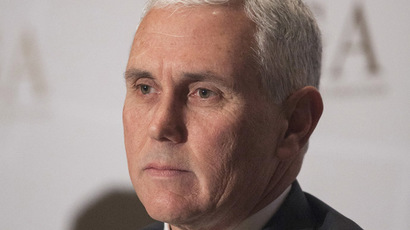Opioid epidemic leads to foster care crisis in many states

Across the United States, the opioid epidemic isn’t just affecting addicts. It’s hurting their children, who are going into an increasingly beleaguered foster care system. Demand for foster homes can’t keep up with the numbers of kids needing placements.
Across the United States, the opioid epidemic isn’t just affecting addicts. It’s hurting their children, who are going into an increasingly beleaguered foster care system. Demand for foster homes can’t keep up with the numbers of kids needing placements.
Indiana is particularly feeling the burden in its foster-care system due to the drug epidemic in the state.
“It is very hard. We get multiple calls daily from the Department Of Child Services looking for homes for children that have been removed and we have to turn them down because we just don't have any open beds for them,” Jen Rasey, who manages 13 foster homes in the South Bend area, told WSBT.
Earlier this month, the director of Indiana’s Department of Child Services told the General Assembly Budget Committee that the opioid epidemic has meant more children having to be removed from their homes. It’s a trend occurring in at least 32 states.
In the 2015 fiscal year, there were nearly 429,000 children in foster care around the country, a 6.7 percent increase over fiscal year 2013, according to data released in October by the Administration on Children and Families (ACF). There was also a significant boost in the number of children entering the system in 2015, with 71 percent of states reporting a hike between 2014 and 2015.
“From 2012 to 2015, the percentage of removals where parental substance use was cited as a contributing factor increased 13 percent (from 28.5 percent in 2012 to 32.2 percent in 2015)—the largest percent increase compared to any other circumstance around removal,” the ACF said in a statement.
Part of the problem, the agency added, is that “recent trends in substance abuse are sometimes affecting entire families and neighborhoods, making a child’s placement with relatives an unviable option.”
However, substance abuse isn’t the only factor in the growing number of children entering foster care, Marie K. Cohen wrote for the Chronicle of Social Change in mid-December. Changes in policy and practice could be to blame for at least some of the increase in foster care entries in at least three states: Georgia, Florida and Minnesota.
Those changes included new tools, such as a centralized child abuse hotline; tougher procedures for investigating reported abuse; and adding child welfare workers and abuse investigators. In June, New Hampshire enacted a law that changed the definition of child neglect to include a parent’s opioid abuse, thus making it easier for child welfare authorities to intervene in cases of addiction.
Experts warn that there is no definitive link between the rising number of children in foster care and the substance abuse epidemic.
“It is anecdotal,” Rricha Mathur, a senior policy advisor for child welfare and child rights at First Focus, told Youth Today. “There is some city-level data and state-level data, but there isn’t really a comprehensive national look yet at the opioid numbers.”
The data is also difficult to collect because opioid abuse often begins with legal prescription medications, she added.
Another factor, according to Cohen, is a trend away from favoring family preservation whenever possible “in light of tragic events that suggested these policies are putting children at risk.”
Nearly half of all states have reported serious shortages of foster parents, which could be made worse by restrictions on “congregate care” programs that put children in foster placements other than family homes, Cohen wrote.
Alaska, Kansas and Ohio are among states that have issued emergency pleas for more foster parents.
“We’re definitely in a crisis, and we don’t see an end in sight any time soon,” Angela Sausser, executive director of the Public Children Services Association of Ohio, a coalition of public child safety agencies in the state, told the Pew Charitable Trusts in October.
There was no warning of an impending crisis, either.
“For everyone, the crisis happened so quickly, there was no time to gear up,” said Maria Moissades, a Massachusetts child advocate. “No one knew it was going to be as big.”
Opioids aren’t the only drugs leading to the foster-care crisis. Parental substance abuse also includes heroin, methamphetamines and cocaine, epidemics that are also affecting different parts of the country.
Growing pains: Long-term #opioid prescriptions lead to addiction in 1/3 patients https://t.co/gulPA58cchpic.twitter.com/KBcl5oq7km
— RT America (@RT_America) December 10, 2016














